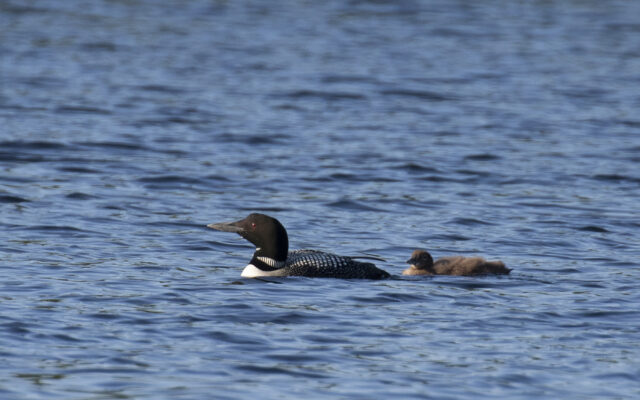
Maine Audubon annual Loon Count set for July 16
FALMOUTH — Did you know that loon chicks can swim right away but need parental care for their first three months? That the shape of a loon’s forehead or length of its neck can change to indicate stress? And that Maine is fortunate to be home to the largest Common Loon population in the Northeast?
For nearly four decades, Maine Audubon has been studying loon behavior and engaging volunteers across Maine in conservation efforts to bolster the loon population. One of our most powerful and popular tools is the annual Loon Count, scheduled this year for Saturday, July 16 from 7-7:30 a.m.
This event has engaged more than a thousand volunteers since 1983. On the third Saturday of July, participants head out in skiffs, kayaks, and pontoon boats to tally the Common Loons they see. Last year, volunteers of all ages counted loons on 328 lakes.
Maine Audubon uses the statewide snapshot to estimate the annual population and track population trends across the decades. The information helps biologists, state officials, and Maine lake users understand more about the loons’ status and the health of Maine’s lakes. “The count gives us a window into the status and changes in Maine’s Common Loon population over time,” says Tracy Hart, Maine Audubon wildlife ecologist.
Since the loon count’s inception in 1983, the number of adult loons in the southern half of the state has essentially doubled, from an initial estimate of fewer than 1,500 to nearly 3,000 in 2020. This is thanks in part to conservation efforts like the Maine lead tackle ban and the Fish Lead Free Initiative (fishleadfree.org/me) which have helped reduce the number of adult loons that die from swallowing lead tackle.
There’s still much more to learn about Maine’s loon population. That’s why Hart is particularly excited about the expansion of loon conservation and outreach programs, thanks to new funding sources. Last year, Maine Audubon received a five-year grant to significantly expand the Maine Loon Project, and to partner with Maine Lakes, Lakes Environmental Association, and the Penobscot Indian Nation to work to improve loon productivity and reduce mortality in the state. The new partnership, the Loon Restoration Project, is an exciting opportunity to work with local volunteers to start documenting loon nesting successes and failures in more depth. Key components include placing artificial nesting rafts where appropriate and creating a robust volunteer loon monitoring program.
More information, including Maine Audubon’s “Living in Loon Territory” brochure, is available at maineaudubon.org/loons.